
A wargame is a strategy game in which two or more players command opposing armed forces in a realistic simulation of an armed conflict. Wargaming may be played for recreation, to train military officers in the art of strategic thinking, or to study the nature of potential conflicts. Many wargames recreate specific historic battles, and can cover either whole wars, or any campaigns, battles, or lower-level engagements within them. Many simulate land combat, but there are wargames for naval and air combat as well.
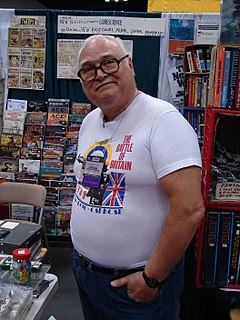
Louis Zocchi is a gaming hobbyist, former game distributor and publisher, and maker and seller of polyhedral game dice. In 1986, he was elected to the Charles Roberts Awards Hall of Fame.

Miniature wargaming is a form of wargaming in which military units are represented by miniature physical models on a model battlefield. The use of physical models to represent military units is in contrast to other tabletop wargames that use abstract pieces such as counters or blocks, or computer wargames which use virtual models. The primary benefit of using models is aesthetics, though in certain wargames the size and shape of the models can have practical consequences on how the match plays out.

Warmaster is a ruleset for tabletop wargames written by Rick Priestley, published by Specialist Games, and set in the Warhammer Fantasy setting. It is different from Warhammer Fantasy Battles in both appearance and gameplay. It is intended for 10 –12 mm miniatures. Basic troops are based on stands, of which typically three make a unit. Generals, Heroes and Wizards are mounted individually or with their retinue.
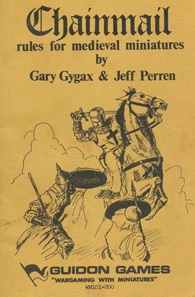
Chainmail is a medieval miniature wargame created by Gary Gygax and Jeff Perren. Gygax developed the core medieval system of the game by expanding on rules authored by his fellow Lake Geneva Tactical Studies Association (LGTSA) member Perren, a hobby-shop owner with whom he had become friendly. Guidon Games released the first edition of Chainmail in 1971.
Battle Cry is a board wargame based on the American Civil War, designed by Richard Borg and published by Avalon Hill in 2000.

Tactical wargames are a type of wargame that models military conflict at a tactical level, i.e. units range from individual vehicles and squads to platoons or companies. These units are rated based on types and ranges of individual weaponry. The first tactical wargames were played as miniatures, extended to board games, and they are now also enjoyed as video games.

Alexander the Great is a board wargame first published by Guidon Games in 1971. A revised edition of the game was published by Avalon Hill in 1974.
Panzer Leader is the sequel to Avalon Hill's PanzerBlitz game.
Guidon Games produced board games and rulebooks for wargaming with miniatures, and in doing so influenced Tactical Studies Rules, the publisher of Dungeons & Dragons. The Guidon Games publishing imprint was the property of Lowrys Hobbies, a mail-order business owned by Don and Julie Lowry. About a dozen titles were released under the imprint from 1971 to 1973.

Tractics: Rules for WWII Miniatures is a set of wargaming rules for conducting World War II style combat with 1:285 scale micro armour miniatures. It was originally written to use 1/87 scale miniatures which were easily available at the time of its writing. Written by Mike Reese and Leon Tucker with contributions by Gary Gygax, the game was published by Guidon Games in 1971 and republished by TSR, Inc. in 1975.

Don't Give Up the Ship is a set of rules for conducting Napoleonic era naval wargames. The game was published by Guidon Games in 1972 and republished by TSR, Inc. in 1975. The game was developed as a collaboration between Dave Arneson, Gary Gygax, and Mike Carr. It was the first collaboration between Dave Arneson and Gary Gygax, the co-authors of Dungeons & Dragons. Mike Carr edited the rules and researched the historical single ship actions that are included as game scenarios.
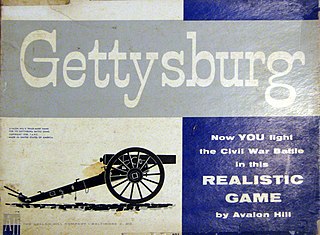
Gettysburg is a board wargame produced by Avalon Hill which re-enacts the American Civil War battle of Gettysburg.
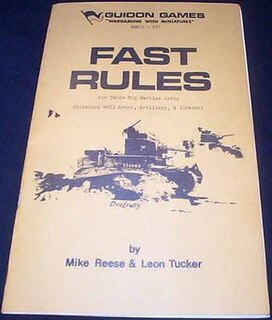
Fast Rules is a simple, playable ruleset for conducting table top wargames with H0 scale World War II miniatures using armor, artillery and infantry and classed as a "mid-level skirmish" wargame. The rules were developed by Mike Reese and Leon Tucker and published as a 24 page pamphlet in 1970 by the Armored Operations Society, an affiliate of the IFW. Guidon Games made a second printing in 1972 and a third printing at an unknown later date. Combat Rules released an full-color, authorized edition in 2021 with a few additions. Compared to the original 5.5x8.5" edition, it has 24 6.14x9.21" pages.
Panzerfaust was a wargaming magazine started by Don Greenwood in 1967 and named after the German panzerfaust, a recoilless anti-tank weapon. Like the more successful Strategy & Tactics magazine, Panzerfaust included complete games.
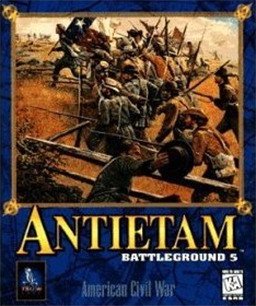
Battleground 5: Antietam is a 1996 computer wargame developed by TalonSoft in 1996, the fifth issue in the popular Battleground series.
Don Lowry is a wargamer, businessman, illustrator, and game designer who is best known as the publisher of Chainmail and the editor of Panzerfaust Magazine.
Micro armour refers to small figurines made of lead, pewter, die cast metal or plastic, usually used for wargaming purposes. Variations of the name include: mini armour, microscale, mini tanks, miniature armour, miniature tanks, micro tanks, minitanks, minifigs, armour figurines, tank figurines, etc. are also used. Micro armour is a sub-category of model military vehicle miniature figures used for military simulation, miniature wargaming, scale models, dioramas and collecting.

A wargame is a strategy game that realistically simulates warfare. Wargames were invented for the purpose of training military officers, but they eventually caught on in civilian circles, played recreationally.













